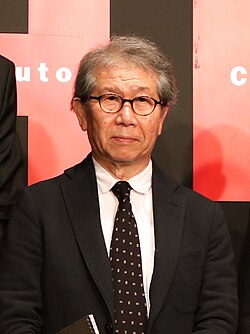In a remarkable milestone for the world of architecture, Japanese architect Riken Yamamoto has been awarded the prestigious 53rd Pritzker Architecture Prize.
Known for his innovative designs that focus on community engagement and human-centric spaces, Yamamoto has become the ninth Japanese architect to receive this esteemed accolade.
This achievement not only underscores his contribution to contemporary architecture but also reinforces Japan’s prominent place in the global architectural landscape.

Understanding the Pritzker Architecture Prize
Often referred to as the “Nobel Prize of Architecture,” the Pritzker Architecture Prize was established in 1979 by the Pritzker family of Chicago through their Hyatt Foundation.
It recognizes living architects whose work demonstrates a combination of talent, vision, and commitment, producing consistent and significant contributions to humanity and the built environment.
The award has celebrated architects who have transformed the way people experience architecture, from Frank Gehry to Zaha Hadid.
Riken Yamamoto: A Visionary Architect
Riken Yamamoto, born in 1945 in Japan, has always been passionate about designing buildings that foster interaction and community.
He graduated from the Tokyo Institute of Technology, where he honed his skills in architectural theory and design.
His philosophy revolves around creating spaces that encourage social engagement, communal activities, and environmental sensitivity.
Over the years, Yamamoto’s work has been recognized not just for its aesthetic appeal but also for its thoughtful integration into the social fabric.
His buildings are often characterized by open, flexible spaces that invite collaboration and connectivity.
From educational institutions to cultural centers, Yamamoto’s designs prioritize people’s experiences and the enhancement of community life.
Signature Projects and Designs
Riken Yamamoto’s portfolio spans a diverse range of projects, each reflecting his commitment to community-oriented architecture.
1. Kitakami River Bank Park: This project demonstrates Yamamoto’s ability to integrate natural landscapes with functional public spaces. The design encourages interaction among visitors while preserving the ecological essence of the riverbank.
2. Yokohama International Port Terminal: Yamamoto’s work here showcases innovative use of structural forms, blending aesthetics with functionality. The terminal is designed to facilitate social interaction among travelers while serving as a landmark of modern architecture.
3. Tsukuba Center Building: In this urban complex, Yamamoto emphasizes openness and fluid circulation. The layout encourages people to move freely and engage with the space, reflecting his philosophy of fostering community through architecture.
Architectural Philosophy: Fostering Community
Yamamoto’s designs are deeply rooted in the concept of “community architecture.” Unlike conventional designs that prioritize individual or corporate requirements, Yamamoto focuses on creating spaces that nurture social bonds and collective experiences.
His architecture encourages encounters, discussions, and collaborative activities, effectively transforming the way people live and interact.
One key element of his philosophy is the use of flexible, multi-purpose spaces. For instance, in his educational projects, classrooms are designed to be reconfigurable, promoting interactive learning and engagement.
Similarly, cultural centers are designed with open layouts that accommodate a variety of activities, from performances to community gatherings.
Sustainability and Environmental Consciousness
Beyond social engagement, Yamamoto places a strong emphasis on sustainability.
His designs often incorporate natural ventilation, energy-efficient materials, and green spaces.
By integrating environmental considerations into his architecture, Yamamoto ensures that his buildings not only serve human communities but also respect and preserve the natural environment.
Awards and Recognition
Prior to receiving the Pritzker Architecture Prize, Yamamoto had already been recognized with several national and international awards.
His innovative approach to architecture has earned him acclaim for redefining urban spaces and public interactions.
The Pritzker Prize further cements his status as a leading figure in the field of architecture, highlighting his lifelong dedication to designing spaces that enhance human connections.
Also Check Out
If you’re inspired by India’s evolving sustainable architecture, don’t miss Kanakia Aroha, Mumbai — a remarkable project featured on Design Asia Magazine. This residential development blends modern luxury with cultural heritage, drawing inspiration from Buddhist architecture and ancient Indian design principles. It perfectly reflects how contemporary design can embrace sustainability while preserving India’s spiritual essence.
Japanese Architecture on the Global Stage
Riken Yamamoto is the ninth Japanese architect to win the Pritzker Prize, joining the ranks of luminaries like Kenzo Tange, Toyo Ito, and Shigeru Ban.
This achievement underscores Japan’s significant contribution to global architecture, particularly in the realms of minimalism, spatial innovation, and community-oriented design.
Japanese architects have long been celebrated for their ability to blend tradition with modernity, harmonizing natural elements with built environments.
Yamamoto’s recognition continues this tradition, emphasizing the importance of human-centered and environmentally conscious design in contemporary architecture.
Impact on Future Generations
Yamamoto’s work serves as an inspiration for emerging architects who aspire to create socially impactful and environmentally responsible designs.
By prioritizing community engagement, his projects demonstrate that architecture is not just about constructing buildings but about shaping experiences and fostering connections.
Young architects studying Yamamoto’s projects learn the importance of context, culture, and community in design.
His emphasis on flexibility and adaptability in architectural spaces also serves as a blueprint for future urban development, particularly in densely populated areas.
Conclusion
Riken Yamamoto’s recognition as the 53rd Pritzker Architecture Prize winner is a testament to his unwavering commitment to designing spaces that foster community and social engagement.
His innovative approach bridges functionality, aesthetics, and sustainability, creating environments that enhance the human experience.
As the ninth Japanese architect to receive this honor, Yamamoto not only elevates Japan’s presence in global architecture but also sets a benchmark for future architects worldwide.
His work exemplifies the transformative power of architecture—building not just structures, but communities, connections, and a sustainable future.
In celebrating Riken Yamamoto, we celebrate the enduring potential of architecture to shape society and enrich human lives.
This accolade is more than an award; it is a recognition of a vision that prioritizes people, community, and the environment, leaving a lasting legacy for generations to come.

